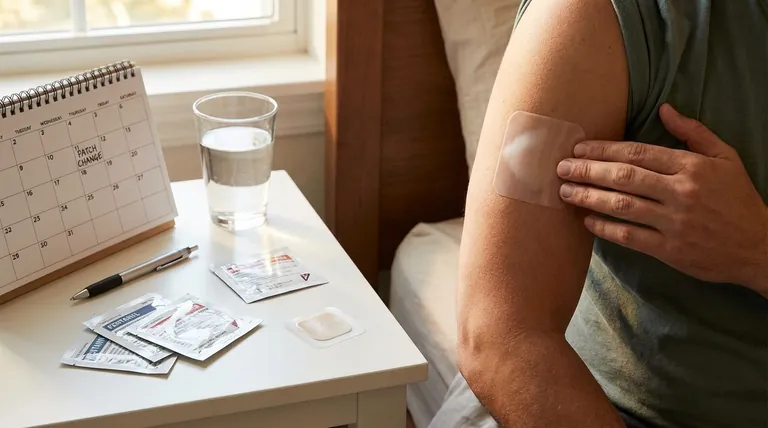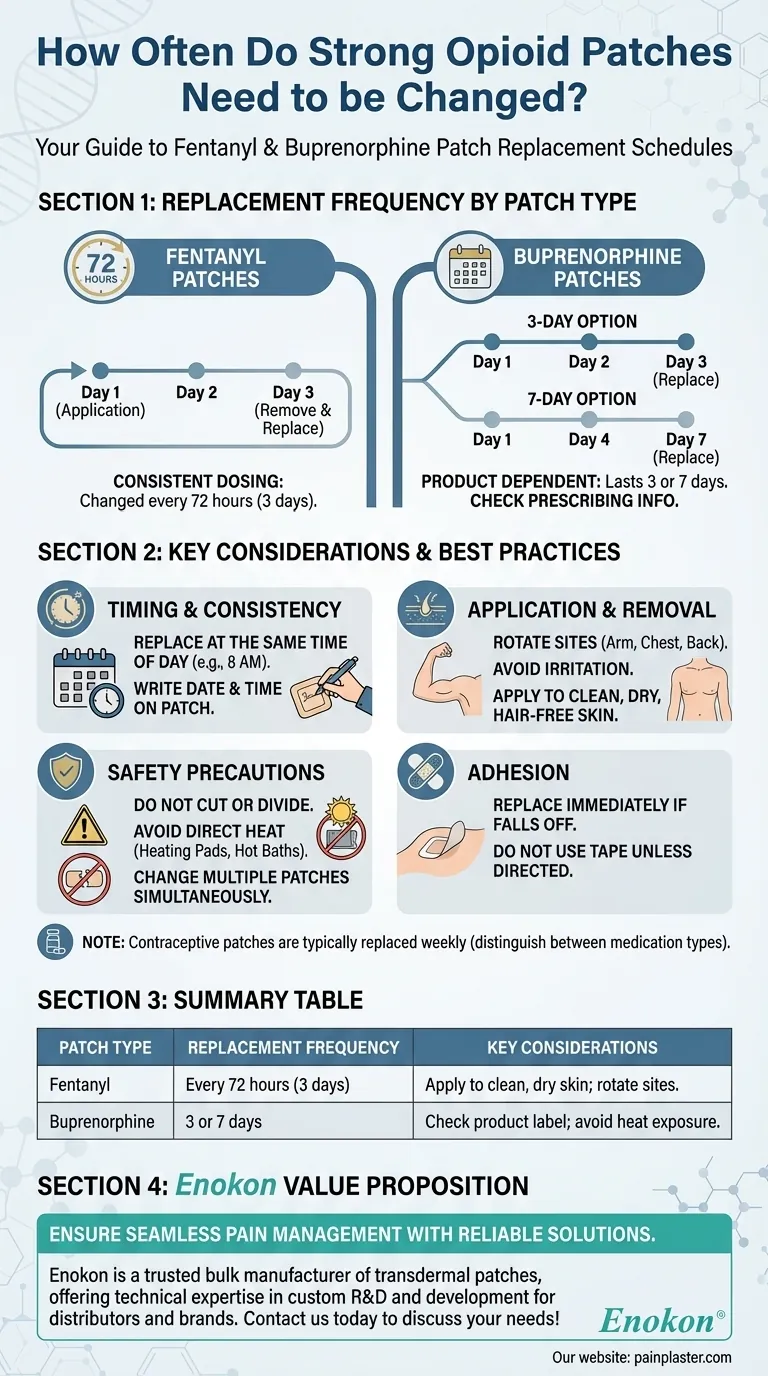Strong opioid patches are designed to provide continuous pain relief over a set period, with the frequency of replacement varying based on the specific type of patch. The two primary types—fentanyl and buprenorphine—have different durations, typically requiring replacement every three or seven days. Proper application and adherence to replacement schedules are critical to maintaining effective pain management and avoiding complications.

Key Points Explained:
-
Replacement Frequency by Patch Type:
- Fentanyl Patches: These are changed every 72 hours (3 days). They deliver a consistent dose of medication over this period before needing replacement.
- Buprenorphine Patches: Depending on the specific product (e.g., BuTrans or Transtec), these may last either 3 or 7 days. Always check the prescribing information for the exact duration.
-
Timing and Consistency:
- Patches should be replaced at the same time of day to maintain steady medication levels. For example, if applied at 8 AM on Monday, the next patch should be applied at 8 AM on Thursday (for fentanyl) or the following Monday (for 7-day buprenorphine).
- Writing the date and time on the patch can help track replacement schedules.
-
Application and Removal Guidelines:
- Location: Rotate application sites (e.g., upper arm, chest, back) to avoid skin irritation. The new patch should not overlap with the previous site.
- Skin Preparation: Apply to clean, dry, hair-free skin. Avoid applying immediately after bathing or showering, as moisture can affect adhesion.
- Adhesion: If a patch falls off, replace it as soon as possible. For pain patches, never use tape or bandages to secure them unless directed by a healthcare provider.
-
Safety Precautions:
- Do Not Cut or Divide: Altering the patch can disrupt the controlled release of medication, leading to overdose or ineffective pain relief.
- Avoid Heat: Heat (e.g., heating pads, hot baths) can increase absorption unpredictably. Keep the patch away from direct heat sources.
- Multiple Patches: If using two patches, change both simultaneously to maintain consistent dosing.
-
Contraceptive Patch Note:
While not related to opioids, the mention of contraceptive patches highlights the importance of distinguishing between medication types. Unlike opioid patches, contraceptive patches are replaced weekly.
By following these guidelines, users can ensure optimal pain relief while minimizing risks. Always consult a healthcare provider for personalized instructions.
Summary Table:
| Patch Type | Replacement Frequency | Key Considerations |
|---|---|---|
| Fentanyl | Every 72 hours (3 days) | Apply to clean, dry skin; rotate sites. |
| Buprenorphine | 3 or 7 days | Check product label; avoid heat exposure. |
Ensure seamless pain management with properly timed opioid patches. Enokon, a trusted bulk manufacturer of transdermal patches, offers reliable solutions for healthcare distributors and brands. Benefit from our technical expertise in custom R&D and development—contact us today to discuss your needs!
Visual Guide

Related Products
- Capsaicin Chili Medicated Pain Relief Patches
- Far Infrared Deep Heat Relief Patches Medicated Pain Relief Patches
- Icy Hot Menthol Medicine Pain Relief Patch
- Menthol Gel Pain Relief Patch
- Heating Pain Relief Patches for Menstrual Cramps
People Also Ask
- Can pregnant women use pain relief patches? Your Essential Guide to Safe Pain Management
- How do pain relief patches work? A Guide to Targeted, Long-Lasting Pain Relief
- What side effects might occur from using capsaicin patches? Understand the difference between normal sensation and danger signs.
- What is the purpose of capsaicin patches? A Guide to Temporary Pain Relief
- Are pain relief patches safe for sensitive skin? Your Guide to Safe Use & Skin Testing
















